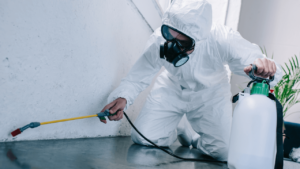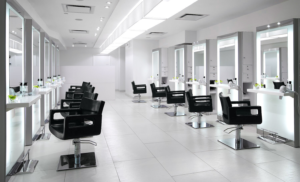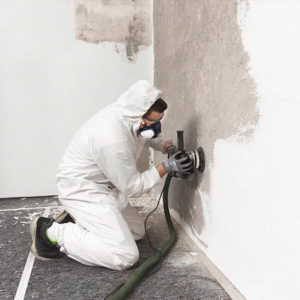You may need an excavation contractor to help you clear a space for a swimming pool or build a new home. They also provide services like laying underground utilities.

Their main task is to prepare construction sites by transforming bare land into a bustling construction site using specialized equipment. They are experts in trenching and grading soil for proper drainage, foundations and landscaping.
A well-qualified excavation contractor is a vital part of any construction project. They manage a range of tasks from planning to operating heavy machinery. Their responsibilities also include integrating crucial infrastructure into the site. This involves trenching and installing conduits for water, sewer, and electrical systems. They also clear the area of any obstructions and prepare it for construction.
When choosing a contractor, be sure to inquire about their experience in the field and work history. Look for a portfolio of completed projects, as well as a comprehensive collection of jobs that are similar in size and scope to the project at hand. In addition, look for a firm with a strong commitment to safety and compliance with industry standards.
An experienced contractor will be familiar with local, state, and federal regulations that apply to excavating operations. They’ll also understand the unique soil conditions that affect excavation work and be able to anticipate potential challenges. This knowledge can help them save time and money by avoiding costly delays in project completion.
Depending on the size and scope of a project, an excavation contractor may need to purchase or rent specialized equipment. Some equipment options include excavators, backhoes, bulldozers, loaders, and dump trucks. A good excavation company will make sure that all machinery undergoes regular inspections and maintenance, so it remains in working order at all times. For new excavation companies, leasing or renting equipment is a great way to manage initial expenses and avoid high upfront costs.
In addition to possessing the right qualifications and equipment, excavation contractors should have a solid business plan. This will ensure that they can provide a competitive price and meet their clients’ needs in an effective and timely manner. They should also have the ability to communicate effectively with other construction professionals and maintain a high level of professionalism throughout the project.
Depending on the location of the excavation company, they may need to obtain a business license or permit. This may be necessary in order to comply with local and state regulations, as well as ensure that they’re following all applicable safety protocols. It’s also important to obtain a Federal Employer Identification Number (FEIN), which is a nine-digit number that identifies a business with the Internal Revenue Service.
Licenses
Whether clearing a site for a commercial project or prepping a lot for building a new home, excavating contractors play a critical role in bringing construction projects from the drawing board to reality. They use heavy machinery to dig and move earth for a wide variety of work, including trenching, grading and landscaping. Their work is vital for laying essential utilities and ensuring that the land meets architectural and engineering specifications.
The first step of an excavation project involves careful site analysis. Taking into account soil conditions, topography and other factors, excavation contractors prepare the ground for construction by excavating and leveling the land. They also install drainage structures and ensure that the site is free of obstacles. This is a crucial task for any construction project because it ensures that the building foundation will be stable and won’t suffer from structural issues down the road.
Before digging begins, excavating contractors create precise plans that consider the site’s needs and layout. This requires precision planning and coordination with other team members, including builders, engineers, and local authorities. By collaborating closely with the team, excavation contractors can reduce delays and ensure that the process is seamless and efficient.
As part of their preparations, excavation contractors also clear the land by digging drainage ditches and clearing debris. This work is vital for preventing flooding, erosion, and other environmental hazards. Additionally, it helps prevent the loss of precious topsoil, which is necessary to reduce air pollution, provide a healthy habitat for wildlife, and protect against harsh sun rays that dry out the soil.
An excavation contractor must have a license to operate in the state of Pennsylvania. To obtain this license, a person must complete a course approved by the Occupational Safety and Health Administration (OSHA) to learn safe practices on excavation projects. In addition, the person must pass a written exam and demonstrate that they have a background in excavation and related work. Depending on the size of a business, the excavating contractor may need to get a general business license and a federal Employer Identification Number (EIN). This is a unique nine-digit number that identifies a company with the IRS.
Experience
The best excavation contractors have a wide range of experience across a variety of projects. This versatility helps them address diverse project needs effectively and efficiently. It also ensures that they’re familiar with a range of soil types and have a good understanding of how to manage unforeseen issues in construction. A portfolio of past projects, client references, and clear communication are all great indicators of a contractor’s reliability and professionalism.
Getting started as an independent excavating contractor can be challenging but it’s not impossible. The first step is obtaining a license to operate as an individual or business. This can be done by filling out a form, taking a test, or paying a fee. Once a license is in place, the next step is to start with smaller jobs and build a reputation for excellent work. This can be done by sharing updates and photos of the job on social media, offering competitive pricing, and providing exceptional service to clients.
Another important consideration is a contractor’s commitment to safety. Choosing a licensed, insured, and experienced contractor is the best way to ensure that your construction project is completed safely and on time. Ask potential excavation contractors about their safety practices and protocols, as well as their commitment to using modern equipment and technology on every project.
Whether it’s digging out space for a foundation or prepping a suburban lot for a dream home, excavation is the groundwork that lays the foundation—literally and figuratively–for all construction work. From site preparation and heavy machinery operation to trenching and grading, excavation professionals play an essential role in construction projects. And with their specialized expertise in land management and soil conditions, these unsung construction heroes lay the groundwork for future progress to succeed from the bottom up. When choosing an excavation contractor, look for a company with a commitment to safety, insurance coverage in case of damage or injury, and a detailed proposal with all expected costs. This will help you make an informed decision and select the contractor that’s right for your project.
Insurance
In addition to having the appropriate licenses and meeting minimum experience requirements, an excavation contractor must also have the right insurance coverage. This type of business insurance is specifically designed to address the unique risks that come with excavation projects, and it provides the financial protection that businesses need against accidents, property damage, and third-party claims.
A good excavation contractor insurance policy typically includes general liability, commercial auto, and workers’ compensation. This coverage can protect the company from claims that arise as a result of the operation of heavy equipment and machinery, and it may help pay for legal fees or other costs associated with litigation.
Accidents can occur at any time during an excavation project, and even when a contractor is following all of the necessary safety measures. A common claim involves hitting utility lines like gas, water, and cable lines during the digging process. This can cause major disruptions and create significant expenses for the company. General liability would typically cover these types of claims, and it may also provide coverage for product liability or problems with completed operations.
If an employee is injured on the job, a worker’s comp policy can help with medical costs and lost wages. Since excavation contractors often work in high-risk areas, it’s important to have this type of insurance coverage.
Many excavation and grading companies have expensive machinery and tools that need to be transported to and from jobsites. A typical commercial property policy won’t provide protection for this equipment, so excavation and grading contractors can purchase excess equipment/tools insurance to help with these expenses. This type of insurance typically covers the cost of repairing or replacing equipment that is stolen or damaged while in transit or at a jobsite, and it can also include coverage for rented equipment.
Some excavation contractors use their own vehicles to transport equipment and supplies to jobsites, while others hire subcontractors to do the work. Subcontractors must be covered by workers’ compensation and general liability to ensure that they’re protected in the event of a workplace injury. It’s a good idea for excavation and grading contractors to discuss the needs of their specific business with an experienced insurance agent to make sure that they have the right types of business insurance in place.








